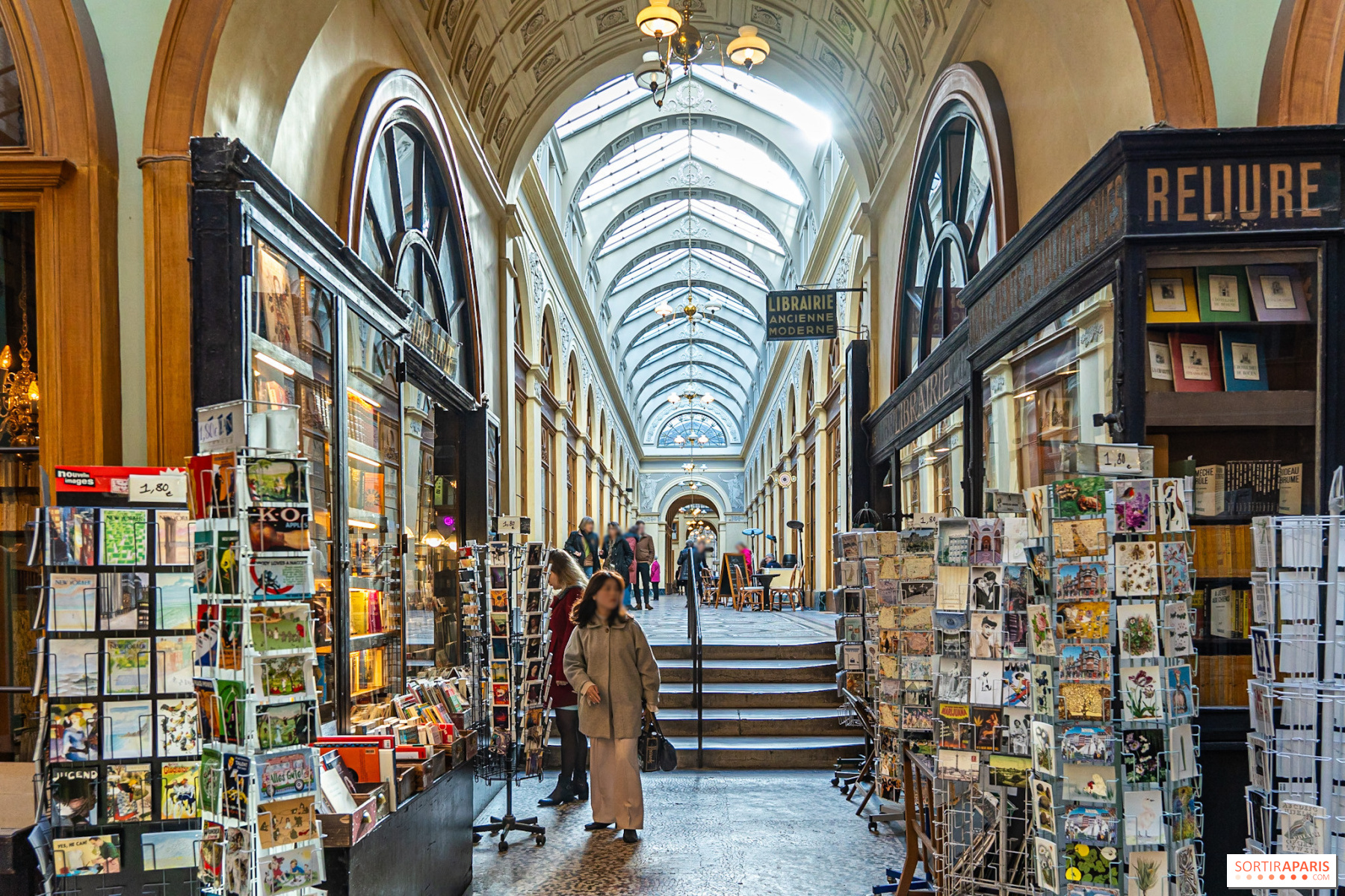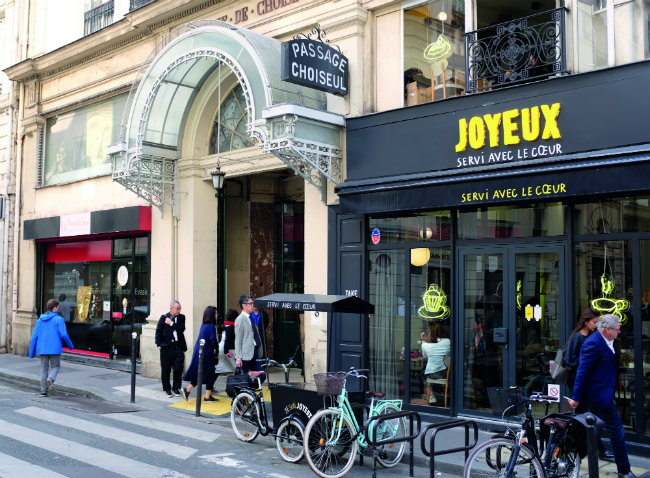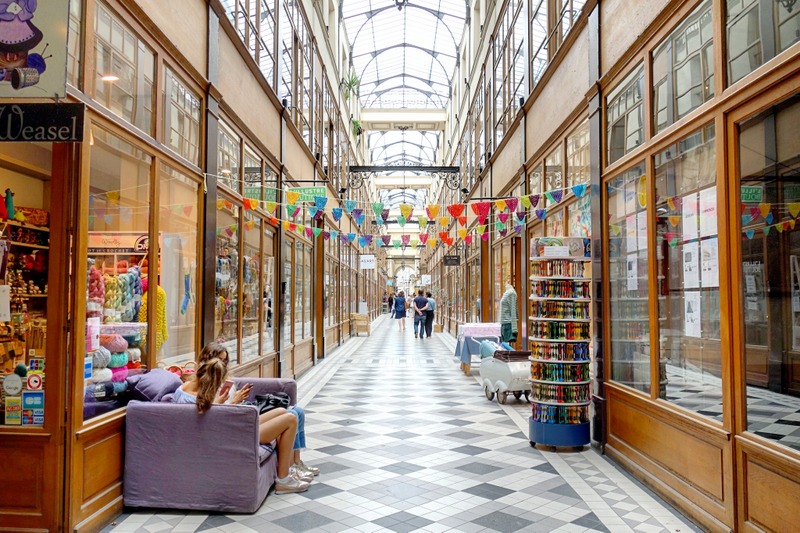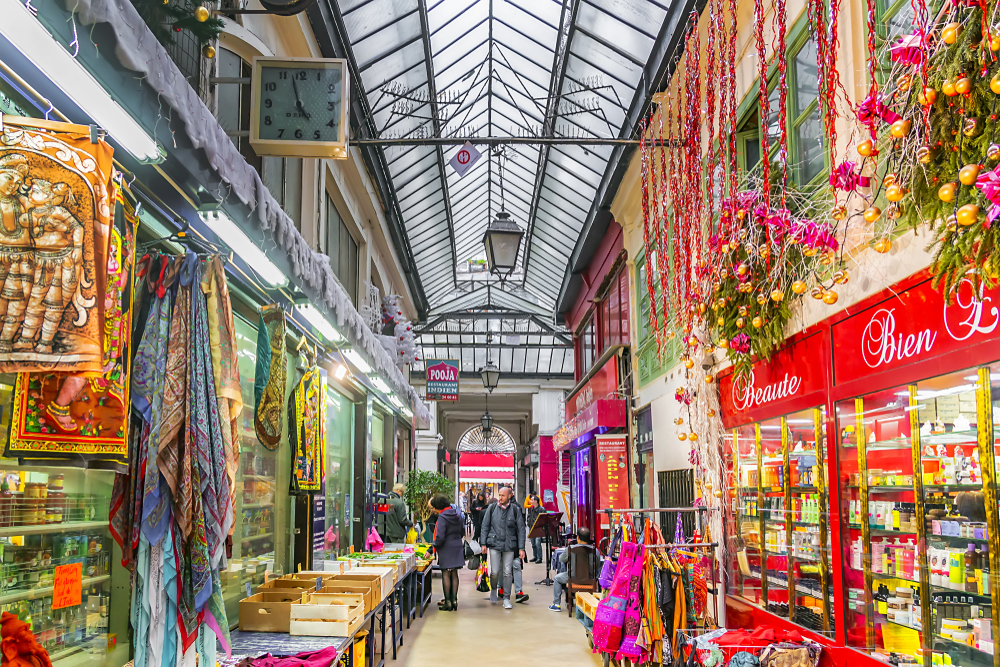The rainy days of early spring don’t mean that you can’t enjoy a slow stroll around Paris and indulge in the Parisian tradition of the Flâneur thanks to Paris’ many 19th-century passages couverts.
These glass-roofed covered shopping arcades and galleries are often lined with boutiques and bistros and were the precursor to the modern shopping mall. At a time when streets were made of dirt and poorly organised, the advent of these passages couverts revolutionised the way people shopped and roamed the city. They also quickly found their place in literature and scholarly analyses. Some of the best known examples are Emile Zola’s Therese Raquin, Honoré de Balzac’s Illusions perdues, and Walter Benjamin’s final and unfinished Passagen-werk (Arcades Project).
Mostly a product of the first half of the 19th century, there were close to two-hundred covered passages by the 1860s, though only twenty-five have survived into the twenty-first century. The 2nd Arrondissement has the highest concentration of passages couverts but they can be found hidden across the city if you look out for them. Here are some of our top picks to explore during the coming April Showers:

Librairie Jousseaume, Galerie Vivienne. Sortir à Paris.
Galerie Vivienne
The Galerie Vivienne is known for its elegant shops and bistros. It was designed by architect François-Jacques Delannoy and inaugurated in 1826. Forming an “L” between rue des Petits-Champs and rue Vivienne, near the Palais-Royal and across the street from the BnF Richelieu site, the gallery offers a fascinating glimpse of neo-classical architecture, with its arcades, floor mosaics and luxurious decorations. It’s home to one of the oldest bookshops in the city, Librairie Jousseaume, which has been open as long as the Galerie Vivienne itself.

Cafe Joyeux, Passage Choiseul Entrance ©JTIverson
Passage de Choiseul
Based in the area known as Paris’s Little Tokyo near the metro Pyramides, the Passage Choiseul was once home to the controversial author Louis-Ferdinand Céline as a child in the early 20th century. The Passage Choiseul is mentioned in two of his novels: Journey to the End of the Night and Death on the Installment Plan. Now the 190-metre long shopping arcade is home to East Asian specialities. We recommend checking out Little Seoul Restaurant, Yatai Ramen, and L’Othentique Vietnam. You can also find Cafe Joyeux, a charity run cafe that employs adults with cognitive disabilities helping them develop both employability and social skills.

Lil Weasel, Passage du Grand Cerf. Paris la douce.
Passage du Grand Cerf
The Passage du Grand Cerf is known for art, crafts, and obscure collectors shops. Lil’ Weasel is a treasure trove of creative hobby supplies with two stores in this passage, one of which is entirely dedicated to yarn. Eric et Lydie is a jewellery shop on the ground floor and an adorable café on the floor above run by a husband and wife duo. The Fika menu of herbal tea or filter coffee and a cake of the day is a must on a cold, rainy afternoon.

GARDEL BERTRAND / HEMIS.FRhemis.frHemis via AFP
Passage des Panoramas
The Passage des Panoramas is a collector’s heaven; home to stamp, coin and antique dealers it is a treasure cove of the old and rare. It’s history is as odd as its shops’ contents:
In 1799, the American shipowner James Thayer opened the Passage des Panoramas with the main purpose of improve access from the Palais Royal to the Boulevard Montmartre and attracting customers to his panoramas, painted frescoes covering the walls of a round room, housed in purpose built towers on the Boulevard. In 1834, the architect Jean-Louis Grisart added the Galeries Saint-Marc, des Variétés, de Feydeau and de Montmartre to form a covered complex of passages. You can read more about its history here.
Passage Brady
Originally built in 1828, Passage Brady can be found between rue du Faubourg Saint-Denis and Boulevard de Strasbourg. Overflowing with ambiance and aromas, it’s lined with Indian shops and restaurants, one more tempting than the next. You can get some great deals by making a reservation at one of these on The Fork website a day or two prior, we’re rather fond of New Delhi and la Reine de Kashmir! You can read more about Paris’s Little India in this article which explores the area most known for its Indian community.
Further reading or listening:
Ayers, Andrew (2004). The architecture of Paris: an architectural guide. A. Menges
BBC. (2022). BBC Radio 4 – In Our Time, Walter Benjamin. [online]
Elkin, L. (2016). Flâneuse: Women Walk the City in Paris, New York, Tokyo, Venice and London. Random House.
Sutcliffe, Anthony (1993). Paris: an architectural history. Yale University Press.
Zola, E. (1867). Therese Raquin. Siruela.
Top image: francetourisme.fr

